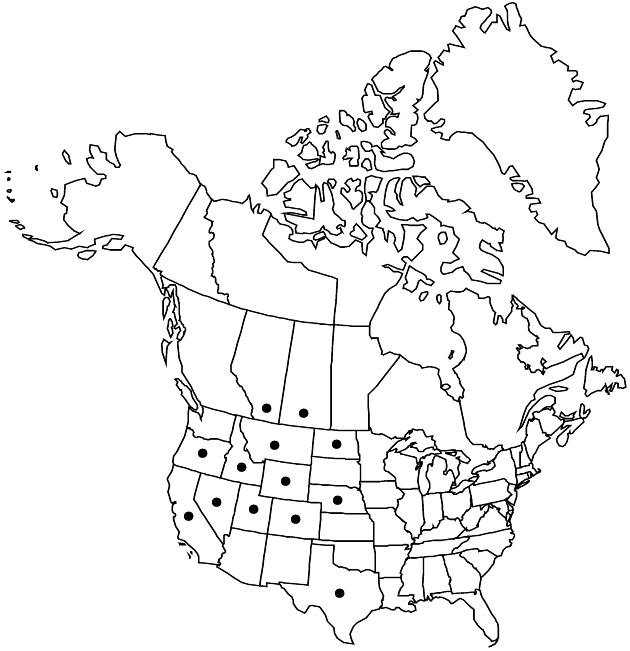Pyrrocoma lanceolata
Erythea 2: 69. 1894.
Plants 20–50 cm. Stems 1–10, decumbent to ascending or erect, red-tinged, sometimes branched, sparsely leafy, ± tomentulose or glabrous, sometimes stipitate-glandular. Leaves: basal blades lanceolate or rarely oblanceolate to narrowly elliptic, 50–300 × 8–30 mm, margins sharply dentate, eciliate, apices acute, spinulose; cauline sessile, lanceolate, bases clasping; faces ± tomentulose to glabrate or glabrous, sometimes stipitate-glandular. Heads (1–)4–20(–50) in corymbiform or paniculiform arrays. Peduncles 0–6 cm. Involucres hemispheric, 7–10 × 10–18 mm. Phyllaries in 3–4 series, linear-lanceolate to lanceolate, 3–11 mm, unequal, bases white-chartaceous, margins entire, eciliate, apices conspicuously green, faces glabrous or tomentulose, rarely stipitate-glandular. Ray florets 18–45; corollas 6–11 mm. Disc florets 20–100; corollas 5–7 mm. Cypselae oblong, 3.5–4.5 mm, 4-angled, faces striate, sericeous; pappi tawny, 5–7 mm.
Distribution

w North America.
Discussion
Varieties 2 (2 in the flora).
Pyrrocoma lanceolata has the widest range of any species and exhibits much variability in habit and head size. A number of infraspecific taxa have been recognized in the past; only two were retained by R. A. Mayes (1976).
Selected References
None.
Key
| 1 | Stems glabrous or sparsely tomentulose, eglandular | Pyrrocoma lanceolata var. lanceolata |
| 1 | Stems tomentulose, densely stipitate-glandular, especially peduncles | Pyrrocoma lanceolata var. subviscosa |